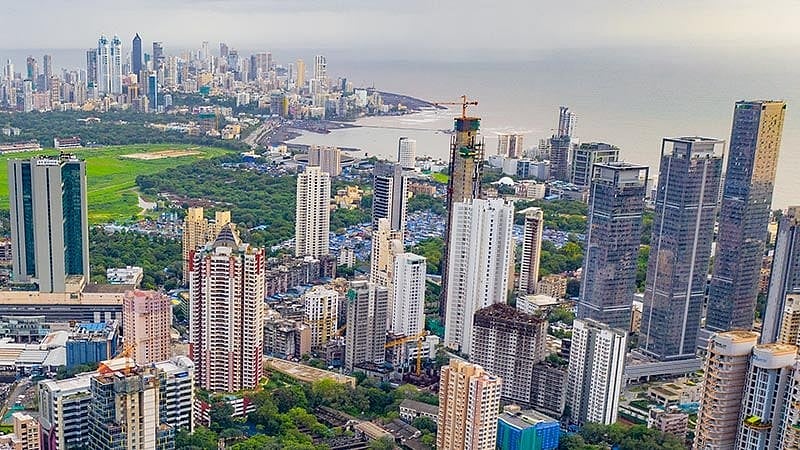Mumbai’s skyline set to rise: Govt proposes increasing highrise height limit to 180m | Representative Image
Mumbai: Housing experts and resident welfare associations are shocked over the state government’s proposal to increase the height limit of highrises in Mumbai from 120 metres (40 floors) to 180 metres (50 to 60 floors).
The urban development of the state government recently asked the BMC to appoint a technical committee to evaluate the height increase proposal. A senior BMC official told the FPJ that the government has already decided to effect the increase and the appointment of a technical committee is only a formality.
Chairman of the Maharashtra Housing Societies’ Federation Ramesh Prabhu said, “Mumbai is already overloaded. By allowing taller buildings in congested city like ours, are we doing justice to the existing infrastructure? The sewage lines are old, roads are narrow and crowded and public transportation is falling short. Will the existing infrastructure be able to bear additional load?” he asked.
“The government has already given additional FSI to cessed, MHADA and SRA buildings for redevelopment. If the height limit of highrises is increased it will add to the problem. In case of a disaster like earthquake, the city will be in a mess,” he observed.
Architect Sulakshana Mahajan, who had filed a PIL in Bombay High Court claiming haphazard development of BDD chawls in Worli said the authorities are least concerned about the adverse impact these high rises will have on citizens’ health and safety and also on the environment.”
“When many high-rises are built in a cluster, it attracts heat and creates a heat island. After cluster development like the BDD Chawls redevelopment where 40 floored buildings are coming up and 75 floored buildings are proposed, it will increase the city’s temperature by 1 or 2 degrees Celsius.”
“Will the builders build more exit points in taller buildings for residents to escape in case of disaster? Does Mumbai have that equipped disaster management system? Also with increased floors, the number of cars will increase. From where the government will build more roads to accommodate the vehicles?” Mahajan asked.
Resident welfare associations’ members allege that the move is only aimed at helping builders who are already making a killing through redevelopment projects. The move will be a bonanza for builders and the sufferers will be the citizens.
“The skyscrapers are prone to disasters. For most of the highrises in Mumbai, the internal firefighting systems are not operational. Is the Mumbai Fire Brigade equipped with machinery to reach up to 60 floors?” President of Tilak Nagar Residents Welfare Association, Adv Nitin Nikam asked.
“There have been incidents in Mumbai where people have lost their lives because firefighters could not reach the top floors in time. If there are disastrous situations, how will BMC justify this new policy? Increasing the height limit of highrises is dangerous for the residents, but the government takes decisions to please the builder lobby rather than the safety of citizens,” Nikam added.
As of today, the Mumbai fire brigade has turn table ladders that can reach up to the 24th floor and only one ladder at Byculla fire station that can reach up to the 60th floor.
Nita Bajpai, trustee of Juhu’s Gulmohar Residents Welfare Association said, “With the increasing high-rises, the number of vehicles also increases. Does the city have sufficient parking space? The existing population is struggling to live a healthy life. If taller buildings are coming up without adequate space around them, the is a lack of fresh air for the residents. Also, the fire engines struggle to reach the spot. We already have a paucity of water; from where will the BMC bring more drinking water? It is nothing but playing with the citizens’ health.”
Environment activist Debi Goenka said, “The city is being choked by rampant unchecked construction as a result of an increase in permissible FSI. The construction of so many high rises has already impacted the airflow within the city – thus resulting in situations where the air quality of Mumbai is worse than Delhi’s on several days of the year. Also, given the fact that we are already running out of usable road space, it seems difficult to imagine how we will cope with the additional traffic, additional water requirements, and other mandatory amenities including additional open spaces.”
President of Mumbai Housing Federation and former corporator Prakash Darekar , however, supported the government’s proposal. He said the authorities should ensure at the time high rates are increasing, the basic infrastructure like sewage lines and roads should also be worked upon to accommodate the rising population.
